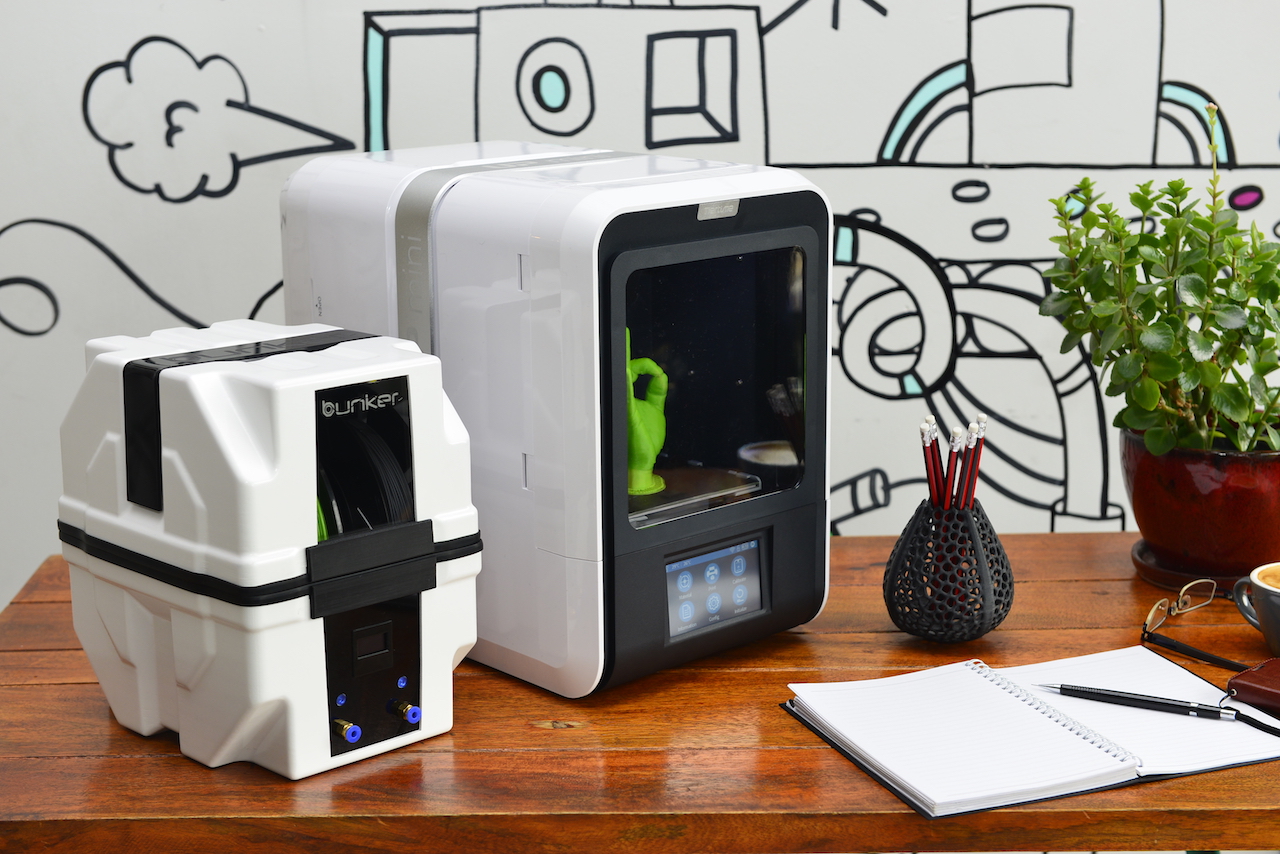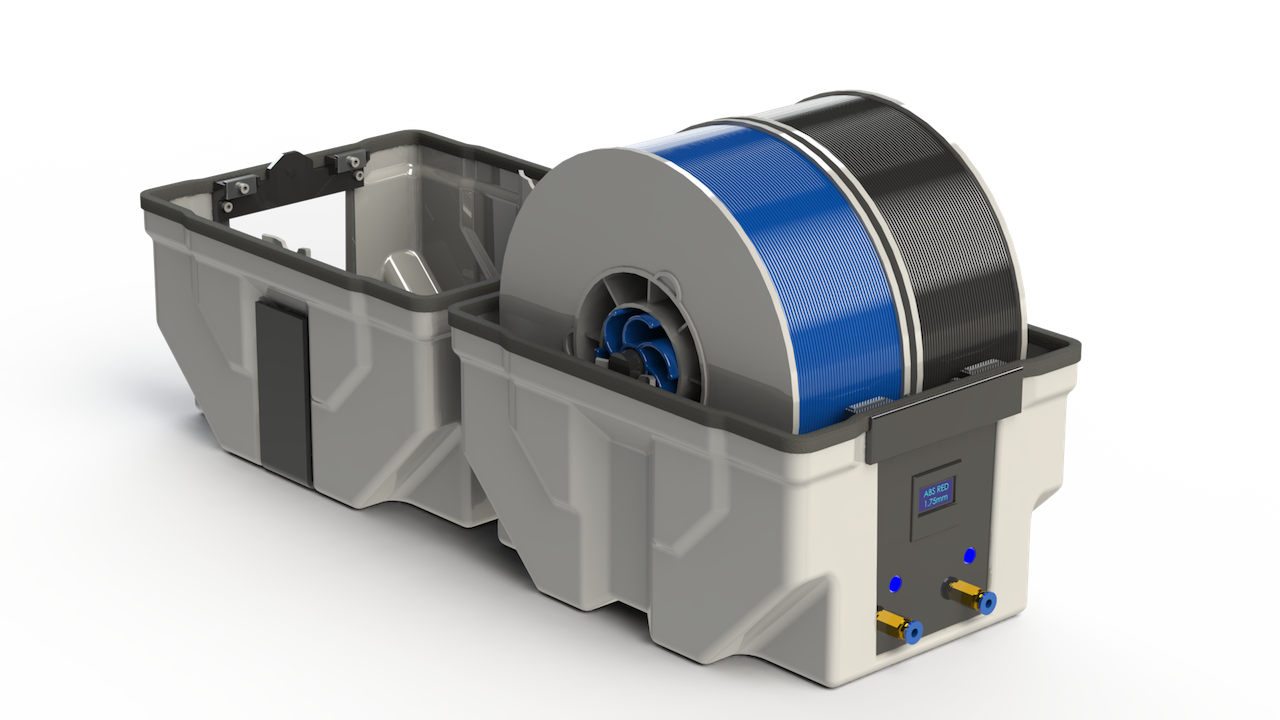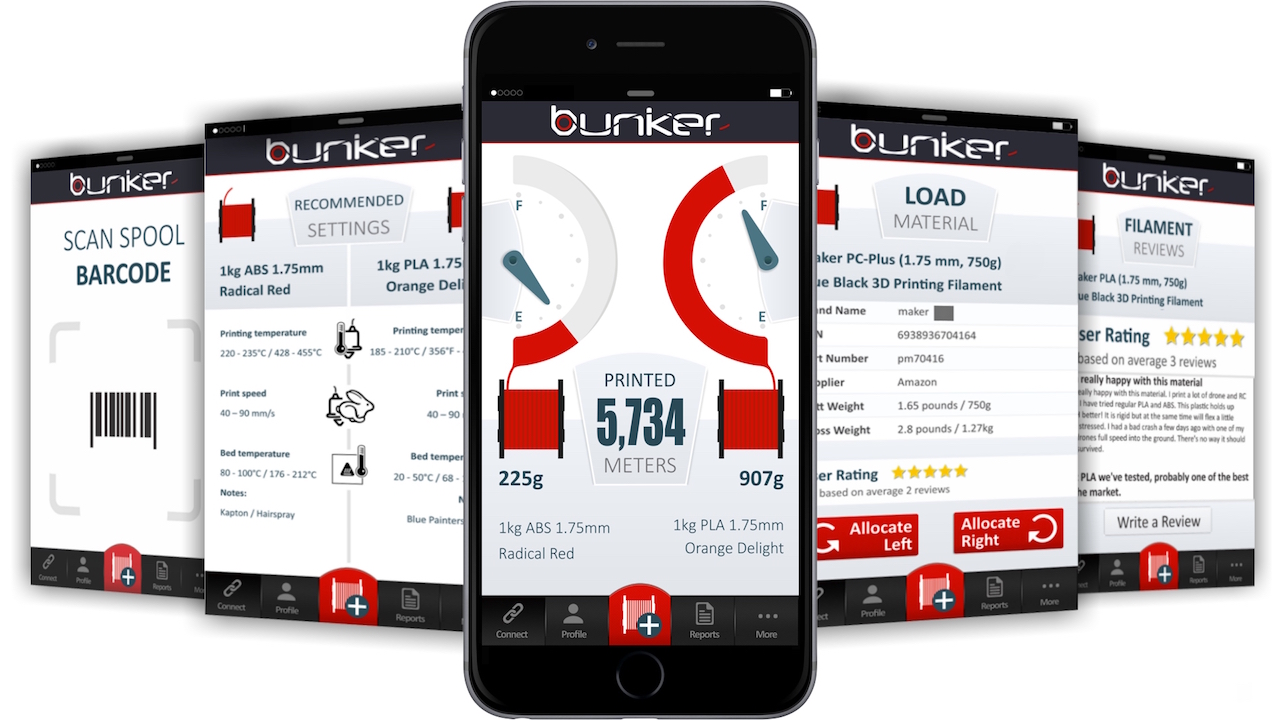
I’m looking at the Bunker, a 3D printing accessory designed to manage 3D printer filament, but it seems this device is far more than it appears.
The problem being addressed by this device is that of filament management. There are multiple issues in handling filament used in desktop 3D printers, including:
- No method to detect “out of filament”
- No way to detect filament stoppage (“air printing”)
- No easy way to control the environment containing the filament
- And many more.
While the first two are obviously catastrophic if undetected and not dealt with, the last of the three mentioned above is a widespread problem.
Much 3D printing filament is made from materials that are quite sensitive to the surrounding environment. They can gather dust, which eventually clogs up hotends; They can become misshapen if exposed to humidity; They can become brittle.
I have a suspicion that a great many desktop 3D printing failures – of which there are many – are in fact due to poor filament handling. Aging filament, poorly stored filament or even filament tangles and feeding issues all are common causes of 3D printing failures.
These and other issues are potentially solved by the Bunker, a new 3D printing accessory from New Zealand-based 3D Printing Systems.
It’s basically an environmentally sealed box that can hold up to two 1kg filament spools. Filament moves from the Bunker to your 3D printer – and this should work for any desktop 3D printer that can use “open filament”. It will not work for devices using proprietary filament cartridges, but will work with Bowden-style 3D printers.

The device includes an intelligent system that provides a powered assist to filament flow. There’s a moisture sensor and a mechanism to track how much filament is moving through the device.
This tracker is no doubt how the machine detects filament stoppages.
It’s also how it detects out-of-filament situations. As each spool is inserted into the Bunker, its bar code must be scanned (and don’t worry, if your spools don’t have bar codes, the company provides some for you to print and stick on them.) By scanning the bar code, the Bunker “knows” how much material has been used through the tracking system.
Spools must be “checked in” by scanning the bar code each time they are inserted. That’s how the Bunker keeps track of usage: per spool.
All of these detection situations are transmitted by WiFi to a server that notifies an app. In other words, your smartphone can alert you to a filament stoppage, moisture problem or even let you know when the filament is getting low – before it runs out!

But for me the most interesting feature is that the machine provides a comprehensive log of print jobs.
Virtually all desktop 3D printers do not provide such a capability, while it is a normal feature on higher-end industrial machines. Such logs are used to deploy costs among multiple users of a 3D printer when it is a shared resource and to determine usage rates and other operational statistics.
What struck me was that the presence of the Bunker in a desktop system seems to transform the otherwise typical 3D printing device into a far more professional system.
High-end 3D printing systems typically provide machine usage logs. They control the environment of the material by enclosing it within proprietary cartridges. These same cartridges contain chips (the electronic equivalent of a bar code) that are used to keep track of the amount of material used. They often provide a motorized assist to push the filament towards the extruder.
In other words, the Bunker makes a common desktop 3D printer a great deal closer to a high end plastic extrusion 3D printer.
This could significantly change how you run a desktop 3D printer. It includes highly desirable features almost always not found in a desktop 3D printer.
In fact, in the ideal situation you would want to store ALL of your filament in such smart containers. However, that could be a bit expensive depending on the amount of filament you have.
The cost of the Bunker is very reasonable: at the current state of their Kickstarter campaign, you can pick one up for only NZD$199 (USD$145). That’s the price of several spools, but I suspect over not too long a period it would pay for itself by avoiding print failures.
As of today, it seems they’re about half-way toward their fundraising campaign target, which I find a bit surprising. This machine fills deficiencies found on almost every desktop 3D printer.
Via The Bunker and Kickstarter

